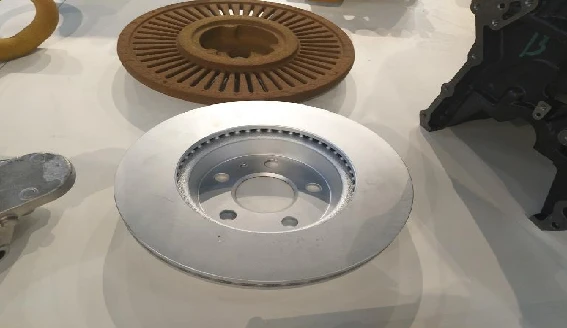Achieving Smooth 3D Prints Without Sanding A Comprehensive Guide
3D printing has revolutionized the way we create objects, allowing for rapid prototyping and unique designs that were once unimaginable. However, one common challenge that many enthusiasts face is achieving a smooth surface finish on their prints. Traditionally, sanding has been the go-to solution, but it can be time-consuming and may not yield the desired results. Fortunately, there are various methods and techniques available that enable you to achieve smooth 3D prints without the hassle of sanding. In this guide, we will explore these techniques and help you elevate your 3D printing game.
1. Choose the Right Filament
The type of filament you choose plays a significant role in the final finish of your print. Some materials, like PLA, tend to offer a smoother finish than others, such as ABS or PETG. If smoothness is your primary concern, consider using a high-quality PLA or specialty filaments designed for a polished finish, like silk PLA or ASA. These materials often have additives that enhance their surface smoothness.
2. Optimize Print Settings
One of the most effective ways to achieve a smooth finish is by optimizing your printer’s settings. Here are some key parameters to adjust
- Layer Height Using a smaller layer height can significantly improve surface quality. A lower layer height reduces the appearance of layer lines and results in a smoother finish.
- Printing Temperature The temperature at which you print affects the material's flow and adhesion. Experiment with higher temperatures (within the acceptable range for your filament) to enhance layer adhesion and minimize visible lines.
- Print Speed Slowing down your print speed allows the filament to flow more evenly and reduces vibrations, which can lead to a smoother finish. A slower speed also gives the material more time to settle into place.
While the goal is to avoid sanding, there are effective post-processing methods that can improve surface smoothness without manual labor
- Vapor Smoothing For ABS prints, vapor smoothing using acetone vapor can effectively melt the outer layer of the print, allowing it to self-level and fill in imperfections. This method requires some safety precautions, including proper ventilation and protective gear.
smooth 3d prints without sanding

- Chemical Baths Similar to vapor smoothing, you can use specific chemicals designed to enhance the surface finish of your prints. Some products are available to smooth out the surfaces of PLA and other types of filaments without sanding.
- Heat Gun A heat gun can be used carefully to slightly melt the outer layers of your print, resulting in a smoother surface. This method requires skill and caution to avoid overheating and damaging the print.
4. Utilize Specialized Software
Slicing software has advanced significantly, offering settings that can better prepare your model for a smooth finish. Some slicers come with options for adaptive layer height or “variable layer height,” where the height changes depending on the model's geometry. This leads to smoother transitions and cleaner surfaces.
Additionally, using a slicer that generates supports effectively can reduce the blemishes left on the surface. Supports that are easily removable will ensure a cleaner finish post-printing.
5. Design for Smoothness
The design stage is crucial when aiming for a smooth finish. Consider these tips during the design phase
- Curves Over Angles Incorporating curves and rounded edges in your designs can help minimize the appearance of layer lines compared to sharp angles.
- Thicker Walls Designing thicker walls allows for better thermal characteristics, giving the printed object more material to work with for a smoother surface.
- Minimize Overhangs Overhangs can create potential artifacts on the surface. Designing with features that minimize overhang will help to maintain a smoother finish.
Conclusion
Achieving smooth 3D prints without sanding is entirely possible by leveraging the right materials, optimizing print settings, exploring post-processing techniques, and adopting smart design practices. By experimenting with these methods, 3D printing enthusiasts can produce beautifully finished objects, saving time and effort while enhancing the quality of their prints. As technology continues to advance, the dream of perfectly smooth 3D prints will become increasingly attainable, paving the way for more innovative creations.
Post time:नोभ . 28, 2024 11:49
Next:Τι είναι η χύτευση άμμου και πώς λειτουργεί
